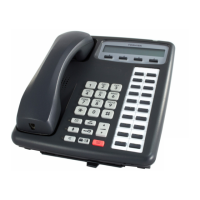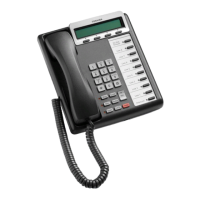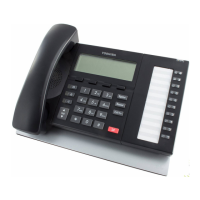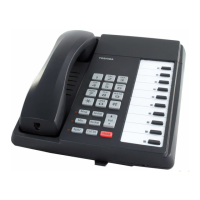TBSU Two-circuit ISDN BRI Interface Unit
DK40 Installation
Strata DK40 I&M Manual Spring 1999
2-49
Refer to the Strata DK40 Programming Manual or DK Library CD-Rom for more details.
TBSU Performance Monitoring Via DK40 Remote
Programming
The DK40 software compiles and keeps a record of specific fault occurrences detected on
ISDN2 circuits, (TBSU/RBSU).
The performance of the TBSU can be monitored using the Data Dump Mode. This requires:
◆ PIOU or PIOUS PCB TTY port.
◆ ASCII terminal or PC with communications software (such as ProComm).
◆ IMDU modem or Hayes compatible modem for remote monitoring.
The TBSU monitoring feature provides a download of BRI errors detected as shown in
Figure 2-27. This data can be stored to a file and/or printed when using a PC with
communications software.
There are no time parameters for the error report, so the time between error-count increments
must be monitored manually. The counter is reset after 15 registrations and begins again from
zero. Basically the error count of any error category should not increase within 24-hour
periods.
➤
To dump the data (BRI ERROR DISPLAY) from a terminal or PC (local or remote)
1. Establish communications between the DK TTY port and the terminal or PC using a
communications software.
2. Enter the security code, and press
Enter (or Return).
3. At the
>
MODE prompt, type DUMP (must be all caps), and press Enter (or
Return
)
. The
>
D prompt displays on your screen.
4. At the
>
D prompt, type DASS and press Enter (or Return).
The three items that are recorded are:
◆
FRAME ALIGNMENT ERROR - Frame errors detected on the I/C signal
◆
CONTROL SLIP - The system records the fact that the internal system timing has
re-aligned itself with the network timing.
◆
CLOCK SOURCE LOST - The I/C timing source has been lost on an ISDN circuit.

